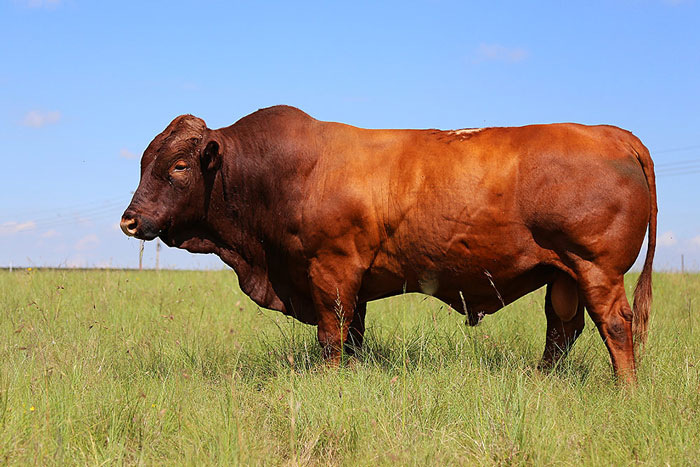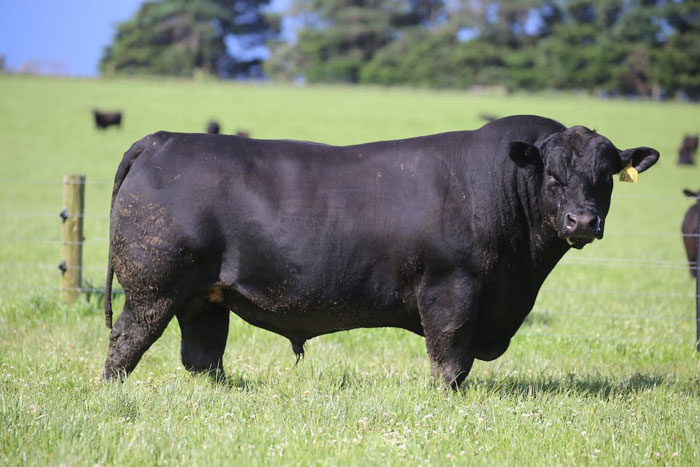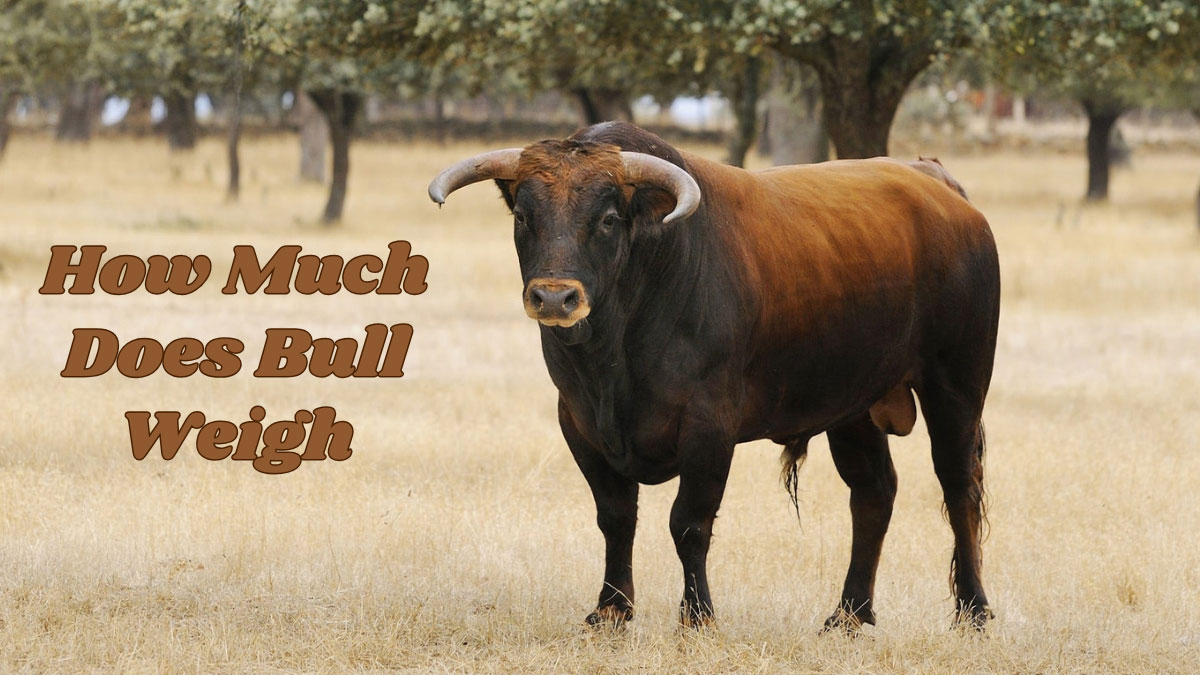How Much Does Bull Weigh: Key Factors Explained
When it comes to understanding the weight of bulls, you’re diving into a fascinating aspect of livestock management. Bulls are known for their impressive size, often weighing significantly more than cows of the same breed. For instance, British Hereford bulls typically weigh between 2,200 and 2,600 pounds, while their female counterparts weigh between 1,300 and 1,800 pounds. This size difference is crucial for breeders and farmers when planning for space, feed, and management.
The weight of a bull isn’t just a number; it’s an indicator of health, productivity, and even temperament. As bulls mature, their weight can reach up to a ton by two years, but managing such large animals can be challenging. Understanding these dynamics is essential for anyone involved in livestock farming, as it impacts everything from feed requirements to the infrastructure needed to safely house these mighty creatures.
Key Takeaways
- Bull Weight Variability: The weight of a bull greatly varies by breed, age, and nutritional practices, with mature bulls typically weighing between 2,200 to 2,600 pounds.
- Influence of Age and Breed: Young bulls show varied growth by age, while breeds like Limousin, Salers, and Holstein weigh differently at maturity, ranging from 1,800 to 2,500 pounds.
- Estimating Bull Weight: Accurate measurement techniques such as weighing scales and weight measuring tapes are essential for effective bull management, with scales providing precision and tapes offering a practical alternative.
- Genetics and Nutrition Role: Genetics and balanced nutrition significantly impact a bull’s weight, with daily weight gain recommended at 1 to 2 pounds for healthy development.
- Growth Management Needs: Understanding growth patterns and requirements ensures bulls achieve optimal health, with mature weight demanding specific intake levels of dry matter and nutrients.
Average Bull Weight
When assessing bull weights, considering factors like age, breed, and nutrition is essential. Mature bulls often weigh around 2,400 pounds, though this varies.

Influences of Age and Breed
- Age: Weights range as bulls mature. At 1 1/2 years, they weigh 1,342 to 1,376 pounds. By 2 1/2 years, they range between 1,659 and 1,895 pounds. As bulls age to 4-5 years, weights approach 2,200 to 2,500 pounds.
- Breed: Specific breeds influence weight considerably.
- Limousin and Salers: These breeds reach about 2,000 to 2,500 pounds at maturity.
- Holstein Bulls: Typically, they weigh 1,800 to 2,200 pounds.
Weight Categories in Bulls
Categorizing bulls by weight can aid in effective management and breeding strategies.
- 1 1/2-year-old Bulls: These bulls generally average 1,376 pounds.
- 2 1/2-year-old Bulls: Historical averages for this age group are about 1,895 pounds.
- Mature Bulls: Bulls aged 4 to 5 years can range between 2,200 and 2,500 pounds based on breed and care conditions.
Understanding these categories ensures that you manage bulls effectively with regard to their space, nutritional needs, and productivity potential.
Methods to Determine Bull Weight
Understanding the weight of a bull is crucial for effective livestock management and productivity monitoring. Various methods exist for estimating bull weight, each with its advantages and limitations.

Using a Weighing Scale
A weighing scale offers the most precise measurement of a bull’s weight. This method involves placing a large animal scale on the bull’s path and recording the weight when the bull steps on it. Accuracy is the key benefit here, as scales provide exact measurements, ensuring precise data for management decisions. However, a large-scale setup might not always be convenient, particularly in rural settings where such equipment may not be available.
Using a Weight Measuring Tape
When scales are unavailable, a measuring tape provides a viable alternative for estimating bull weight. This method involves measuring specific body dimensions to calculate weight. For example, the oblique body length measures from the anterior pectoral protrusion to the highest seat point, and the circumferential girth measures vertically around the body just behind the front legs. By calculating these dimensions, you can estimate a bull’s weight without stressing the animal with repeated weighings. While not as precise as a scale, this method’s average deviation may reach up to 30–40 kg, making it a practical option for routine assessments.
Factors Affecting Bull Weight
Understanding the factors that influence bull weight helps in achieving optimal growth and maintaining herd health. Different elements such as genetics, breed, and nutrition play vital roles in influencing a bull’s weight.
Genetics and Breed
Genetic makeup and breed play significant roles in determining a bull’s weight. Each breed exhibits unique growth patterns and mature weight:
- Simmental Bulls: Typically heavier, with adjusted yearling weight EPDs around 95.7 pounds more than the breed average.
- Limousin Bulls: Lighter, averaging yearling weights approximately 36.1 pounds less than the breed average after adjustments.
The heritability of traits related to weight also impacts bull size. Birth and weaning weights are about 30% heritable, while yearling weight shows 45% heritability. This indicates a substantial portion of a bull’s weight comes from its parents, guiding breeding decisions to optimize desired physical traits.
Nutrition and Feeding Practices
Nutrition is a critical factor affecting bull weight and overall health. Effective feeding practices ensure steady weight gain without excess body condition.
- Daily Weight Gain: Bulls should gain between 1 to 2 pounds per day to maintain ideal body condition.
- Diet: Balanced intake of energy, proteins, and other nutrients is necessary; good quality hay and supplements as per a nutritionist’s advice support growth and fertility.
Feeding not only impacts immediate weight gain but also affects bulls’ future growth potential. Providing a comprehensive diet aligns with genetic predispositions and optimizes overall development.
Weight Variations by Bull Type
Bull weights differ significantly due to various factors such as breed, age, and nutritional management. Understanding these variations aids in effective livestock management and breeding strategies.
Mature Weight
Mature bull weights span a broad spectrum. For instance, a bull weighing 1,700 pounds requires a daily intake of 33 pounds of dry matter, while a 2,000-pound bull needs 37 pounds. A 2,300-pound bull’s requirement jumps to 45 pounds. This dry matter must contain 7% protein and 46% total digestible nutrients (TDN) to meet their nutritional needs.
Age and Growth
Young bulls should reach half their mature weight by 14-15 months. By two years, they often achieve 75% of their full size. This translates to a daily weight gain of about 2 pounds during the 9 months prior to the breeding season. Bulls’ growth patterns require close monitoring to ensure healthy development.
Impact of Horn Size and Type
Horn size and type can influence the weight and management of bulls. Though the horn itself doesn’t add significant weight, bulls with larger horns may require additional space and care during handling. Considering these factors can affect the overall management strategy. Horn type could also indicate breed traits, helping you predict growth and behavior patterns.
Understanding these parameters helps streamline feeding and the overall management process, ensuring optimal health and productivity for the bulls.
Conclusion
Understanding bull weight is crucial for effective livestock management. By recognizing the weight differences among breeds and ages, you can tailor your management strategies to meet the specific needs of your bulls. Accurate weight measurements, whether through scales or estimation methods, play a vital role in monitoring health and productivity.
Appreciating the impact of genetics, nutrition, and growth patterns on bull weight allows you to make informed breeding and feeding decisions. By ensuring your bulls receive the right diet and care, you can optimize their health and productivity, ultimately enhancing your livestock operations.







